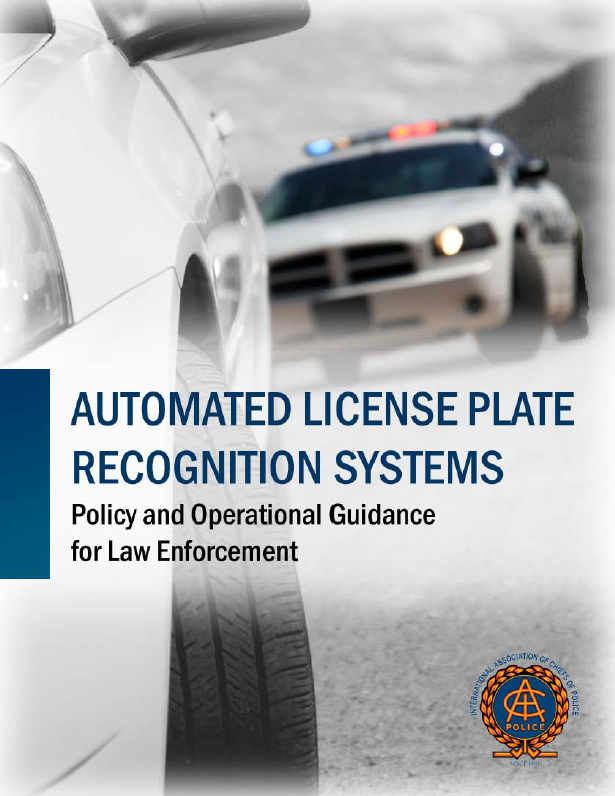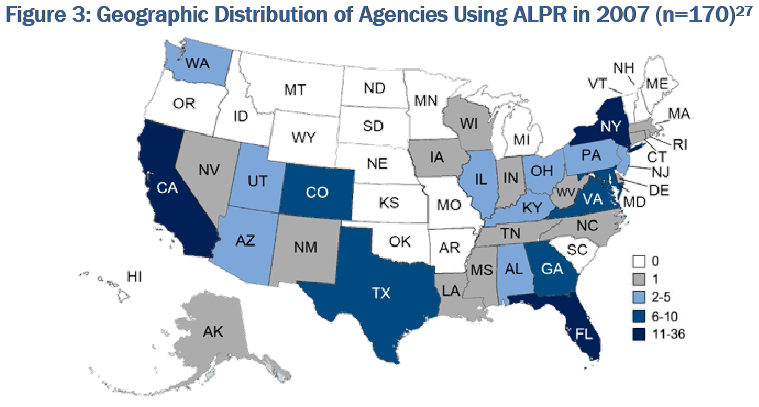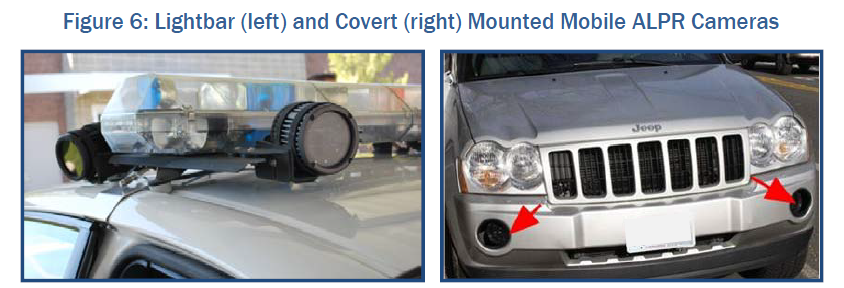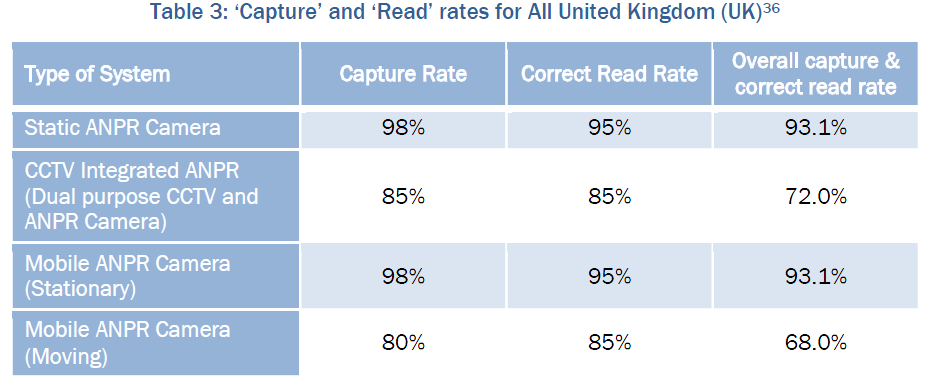The following report was sponsored by the National Institute of Justice under grant 2007-MU-MU- K004 and written by the International Association of Chiefs of Police. It was published in September 2012.
Automated License Plate Recognition Systems: Policy and Operational Guidance for Law Enforcement
- 128 pages
- September 2012
- 4 MB
Law enforcement officers are often searching for vehicles that have been reported stolen, are suspected of being involved in criminal or terrorist activities, are owned by persons who are wanted by authorities, have failed to pay parking violations or maintain current vehicle license registration, and any of a number of other factors. Law enforcement agencies throughout the nation are increasingly adopting automated license plate recognition (ALPR) technologies, which function to automatically capture an image of the vehicle’s license plate, transform that image into alphanumeric characters, compare the plate number acquired to one or more databases of vehicles of interest, and alert the officer when a vehicle of interest has been observed, all within a matter of seconds.
This project was designed to assess ALPR implementation among law enforcement agencies in the United States, and to identify emerging implementation practices to provide operational and policy guidance to the field. A random sample of 444 local, state, and tribal law enforcement agencies was surveyed. A total of 305 agencies responded to the initial survey (68.7%). Three-quarters of respondents (235 agencies, 77.0%) indicated that they were not using ALPR, while 70 agencies (23.0%) responded that they were using ALPR. A longer, more detailed survey was sent to the 70 agencies who confirmed they were using ALPR, and 40 agencies (57.1%) responded.
Survey respondents had typically implemented mobile ALPR systems (95%), and were primarily using ALPR for auto theft (69%), vehicle and traffic enforcement (28%), and investigations (25%). Agencies reported increases in stolen vehicle recoveries (68%), arrests (55%), and productivity (50%). Fewer than half (48%) had developed ALPR policies. Over half (53%) updated their ALPR hot lists wirelessly, and nearly half (43%) updated their hot lists once each day. A total of 40% of respondents retain ALPR data for six months or less (n=16). Five respondents (13%) indicated they retain ALPR data indefinitely, while two indicated that retention is based on the storage capacity of the equipment installed.
ALPR technology is a significant tool in the arsenal of law enforcement and public safety agencies. Realizing the core business values that ALPR promises, however, can only be achieved through proper planning, implementation, training, deployment, use, and management of the technology and the information it provides. Like all tools and technologies available to law enforcement, ALPR must also be carefully managed. Policies must be developed and strictly enforced to ensure the quality of the data, the security of the system, compliance with applicable laws and regulations, and the privacy of information gathered.
…
…
Automated license plate recognition (ALPR) technology was invented in 1976 in the Police Scientific Development Branch (PSDB), Home Office, United Kingdom. The European Secure Vehicle Alliance (ESVA) notes that the “Provisional Irish Republican Army (IRA) terrorist bombings in the City of London resulted in the establishment of the ‘ring of steel’ in 1993 – a surveillance and security cordon using initially CCTV cameras. In 1997, ANPR cameras, linked to police databases, were fitted at entrances to the ring of steel and gave feedback to monitoring officers within four seconds.” Implementation continued over the next several years with forces implementing ANPR systems.
The Home Office Police Standards Unit and the Association of Chief Police Officers (ACPO) began testing dedicated “intercept teams” using ANPR across nine police forces in the multi-phased “Project Laser” beginning 2002. The strategic intent of the ANPR strategy for the Police Services was to “target criminals through their use of the roads.” Intercept teams, typically ranged in size of 7 – 12 officers and equipped with ANPR, were designed to enable police to engage criminality on the road and intercept vehicles and drivers wanted in connection with crime, terrorism, and motor vehicle violations. An analysis of the Laser pilot projects, which collectively produced over 46,000 arrests, concluded that “ANPR makes a direct contribution to both national and force objectives and is used on a daily basis to engage criminals. In comparison to a number of other technology-enabled projects in the criminal justice area, its success has been remarkable.”
Following success of the Laser pilots, the Police Standards Unit invested £32 million for development of the National ANPR Data Centre (NADC) and a Back Office Facility (BOF), which provide data storage and analytic tools for forces in England and Wales, and support deployment of ANPR at national, regional and local levels. Implementing a single technology platform in forces across the whole of England and Wales has enabled the UK to implement universal business practices and technical and data standards. By the end of the first quarter of 2010, the NADC was receiving approximately 10-12 million license plate reads per day from over 5,000 ANPR cameras, had the capacity to receive up to 50 million reads per day, and maintained a database of more than 7 billion vehicle sightings.
…
…




